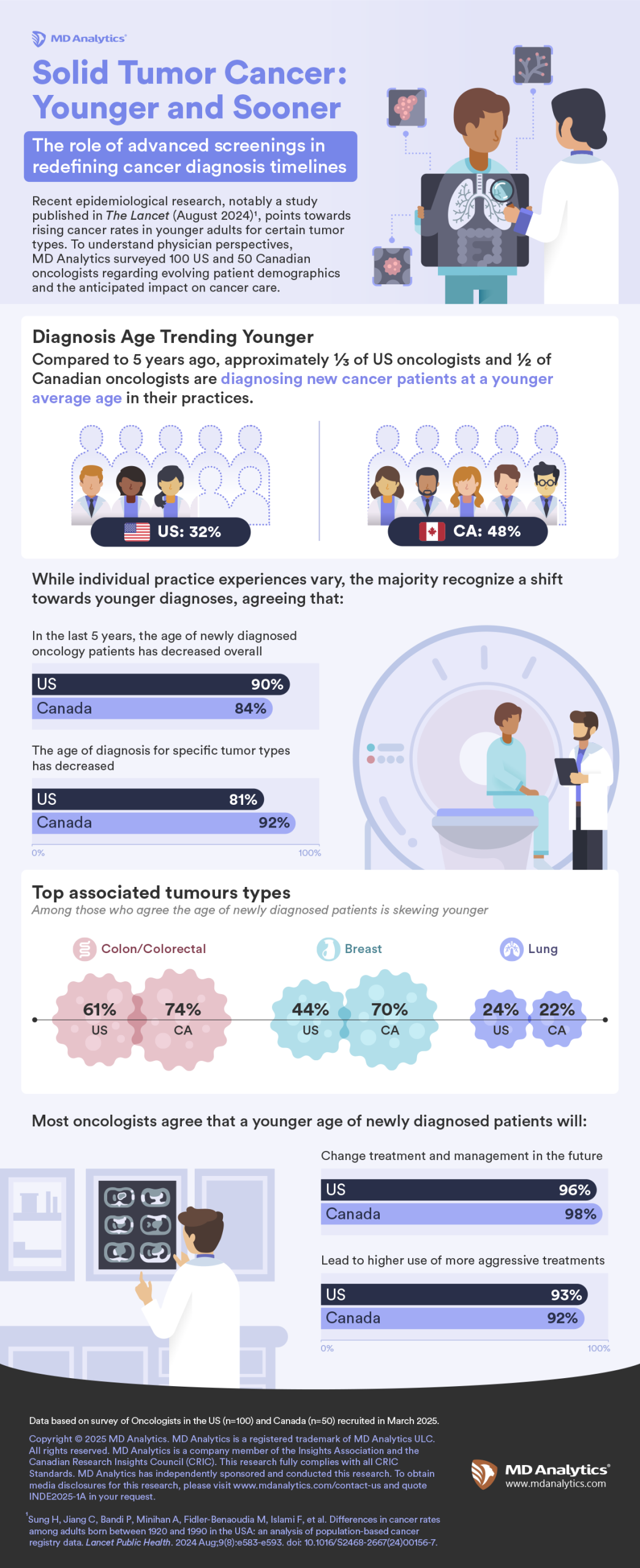In oncology, competition is intense and innovation moves fast. Leading companies are not only developing groundbreaking therapies but also excelling in building...
A recent survey of oncologists in Canada and the United States noted a shift in patient demographics. This demographic shift presents important considerations for those working in the pharmaceutical industry as changes are likely to have an impact on how patients are treated and managed.
In the survey, 48% of Canadian oncologists and 32% of their U.S. counterparts reported that the average age of newly diagnosed cancer patients has decreased within their own practices over the past five years. While this experience is not yet universal, a broader consensus emerges when looking beyond individual practices. An overwhelming majority—84% of oncologists in Canada and 90% in the U.S.—agree that, overall, the age of newly diagnosed oncology patients has declined in recent years. Furthermore, when asked about trends for specific tumour types, 92% of Canadian oncologists and 81% agree decreases are associated with specific tumour types. Among those who agree, colorectal cancer and breast cancer are key tumour types for this shift.
Read More
This change in age demographics could have meaningful implications for treatment strategies. Nearly all oncologists surveyed—98% in Canada and 96% in the U.S.—believe that a decline in the average age of diagnosis will alter how treatment and patient management are approached in the future. In addition, the majority expect that this shift will result in an increased use of more aggressive treatment options, with 92% of Canadian and 93% of U.S. oncologists anticipating a greater demand for such therapies.
For pharmaceutical companies, especially those focused on oncology, these findings represent both a challenge and potential opportunity. As patients skew younger, traditional assumptions about who is being treated, and how, are likely to change. Messaging, education, and patient support programs may need to evolve to better align with the values, lifestyles, and concerns of younger patients. From a product development and market access standpoint, this trend may also impact the timing and nature of treatment interventions and how products are used and/or perceived.
Past Studies
Past Studies
Leaders in Oncology
In oncology, competition is intense and innovation moves fast. Leading companies are not only developing groundbreaking therapies but also excelling in building...

